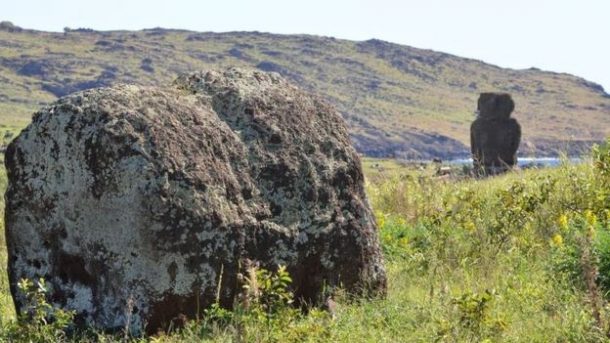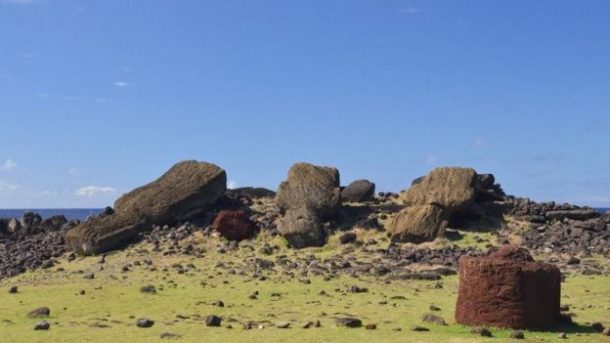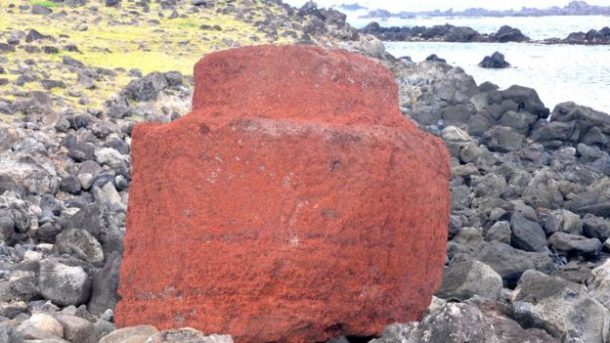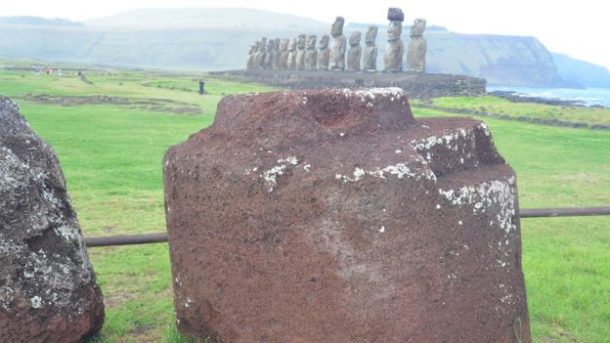The statues of Rapa Nui or the Easter Island are well known around the world for their deep eyes and long ears. They also have impressive multi-tonne hats made from a different rock altogether. These hat like structures are known as Pukao and how they were transported to the top of the statues remained a mystery for a long time.

The mystery is now believed to be solved by American archeologists who believe a simple ramp and rope system was used to transport these. “The fact that they successfully assembled these monuments is a clear signal of the engineering prowess of the prehistoric Rapanui people,” said Sean Hixon, lead author and graduate student in anthropology, at Penn State.
The Pukao were rolled across miles of rugged terrain and earthen ramps in order to reach the top of the Moai statues. The largest of these hats weighs almost 11 tonnes. The researchers used motion mapping and digital photographs to see where the marks of wear and tear were in order to figure out how they were moved.

According to their findings, the people built ramps in front of the forward-leaning statues and then rolled the hats till they reached the top and then the statues were tipped upright. The method used to transport these Pukao with ropes is still used today to right capsized ships.
“Even in the case of the most massive Pukao that was brought to the top of the tallest statue, 10 people likely could have rolled it up a ramp with reasonable dimensions,” Mr. Hixon explained. The Pukaos are made of a red volcanic rock called scoria and the materials were excavated from craters at the opposite sides of the island with some giant hats being rolled into position from as far away as 13 km.

Some of the cylinders were abandoned along the way during transportation and they still lay there abandoned. Markings on these Pukaos also show that were rolled. “With the building mitigating any sense of conflict, the Moai construction and Pukao placement were key parts to the success of the island,” said anthropology professor Carl Lipo. “Culturally, the addition of hats is likely related to honoring ancestors. The head is traditionally thought to contain ‘mana’, so adding the hat provides additional prestige”
Nearly 1,000 giant stone statues were made by the Rapanui people and the Moai were positioned to form a ring around the island facing inland. “The hats would be the grand finale – the final showing off of the coherence of the group, the technology and the genius in engineering,” Prof Terry Hunt, from the University of Arizona, told BBC News.

The members of the Spanish expedition to Easter Island in 1770 were the first to record their descriptions of the scoria hats. F. A. de Agüera y Infanzon wrote, “the diameter of the crown is much greater than that of the head on which it rests… a position which excited wonder that it does not fall”.
The Pukao were said to resemble hats in 1917 by anthropologist Scoresby Routledge while Thor Heyerdahl, a Norwegian adventurer thought they looked like heads of hair. Prof Lipo said this incorrect notion came from thinking they were the same elite “red-haired” people who built monuments in South America, instead of the Polynesian descended Rapanui society. However, given the “deep tradition of headgear, thinking of Pukao as hats is more consistent with what we know about the island,” explained Prof Lipo.

“These were ancient engineers with a genius that allowed people to walk multi-tonne statues and roll multi-tonne hats – which teaches us about the society’s investment in honoring their ancestors. It’s quite a remarkable accomplishment,” Prof Hunt said.
Now this is one mystery that we can put to rest!


